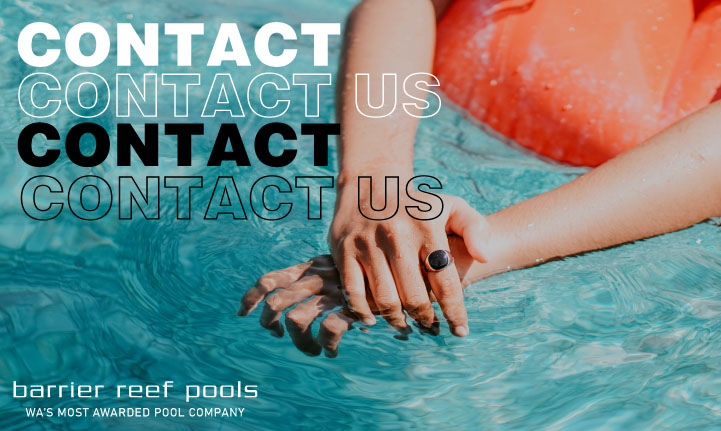If you've got a fibreglass pool, then you can rest assured that your children will be using it. But when your child uses the pool, they are also at risk of contracting swimmer's ear. Also known as otitis externa, this is essentially an inflammation of the child's external ear canal.

Swimmer’s ear can basically be caused by either fungi or bacteria. This means that you’ll need to keep the waters in your fibreglass pool clean if you want to prevent the risk of your child contracting swimmer’s ear.
In addition to this, you also need to ensure that your child doesn’t have water left in their ears after they leave the pool. If water is left in their ear for long periods of time, then either bacteria or fungi could grow there.
The Causes of Swimmer's Ear In Children
There are various things that increase the chances of your child getting swimmer’s ear. The common causes usually are swimming, or being in conditions that are humid. There are other situations that could lead to a child getting swimmer’s ear as well.
These include:
If the ear canal is cleaned in a rough manner.
If the ear canal experiences any injury.
If foreign objects make their way into the ear canal.
If there is a lot of earwax in the ear
Certain skin conditions like eczema as well as some kinds of dermatitis may also cause swimmer's ear.
If there is dry skin in the ear canal.
Children Who Are At Risk For Swimmer's Ear
Children who do the following are at a higher risk of contracting swimmer’s ear:
- Children who spend a lot of time swimming, especially in lakes. The chances of them getting swimmer’s ear while using maintained recreational pools is less, same with the ocean.
- Should a child not remove excess moisture after they swim, they could get swimmer’s ear as well.
- If the child experiences any kind of injury to their ear canal. This can come from trying to clean the ear canal, or by scratching it.
- Should the child use hearing aids, swimming caps, or headphones.
- Should the child experience skin irritation, skin allergies or other skin conditions.
- If the child has an ear canal that is narrower.

The Symptoms of Swimmer's Ear
If your child has swimmer’s ear, they could be experiencing the following symptoms:
Redness in their outer ear.
Their ear could be itchy.
There could be drainage from their ear.
They could experience pain while touching or trying to wiggle their ear lobe.
Their ear canal could be swollen.
They could experience hearing loss, or their hearing could be muffled.
Their ear could feel like it's full or plugged up.
The symptoms caused by swimmer’s ear are similar to those of other health conditions. That’s why if you think your child has swimmer’s ear, you should take them to a doctor.
(Not sure how long your fibreglass pool will last? See the details here!)
Treatment of Swimmer's Ear In Children
The exact treatment that your child will be prescribed is based on their symptoms, their age, as well as their general health. The severity of their condition will also factor into this.
When you get your child’s swimmer’s ear treated by a doctor, it will usually clear up in seven to ten days. Their treatment could include:
- Antibiotic ear drops
- Pain medicine
- Corticosteroid ear drops
- Ensuring that the ear stays dry
What Can You Do To Ensure That Your Child Doesn't Get Swimmer's Ear?
These are the steps you can take to prevent swimmer’s ear in children:
When you're swimming or bathing, you should ensure the child is using earplugs.
When cleaning their ear canal, be as gentle as you can be.
Dry their ears well, especially after they've just been swimming.
Cotton swabs shouldn't be used in their ears.
Another way you can dry your child’s ears is with a hair dryer. But when drying their ears, ensure that the setting is set to low and in cool mode. The hair dryer should be held at least twelve inches from the child’s head. Also, don’t hold the dryer still, but keep moving it back and forth.
Need more pool accessories? See our picks here!

How To Ensure Your Pool Water Stays Clean
You’ll need to monitor your water chemistry in order to ensure that the pool water is safe to swim in. Chlorine is popularly used to kill germs in swimming pools. However, it doesn’t work right away.
When you do it properly, the free chlorine in the water can kill most germs present within a few minutes. You should also ensure that the pH of your water stays between 7.2-7.8. The free chlorine concentration in the pool should be at least around 1 ppm. For spas, this figure is 3 ppm.
Say you’re making use of cyanuric acid, which is a chlorine stabilizer, or you use chlorine products that come with cyanuric acid. If this is the case, then ensure that your pH is between 7.2-7.8. The available tree chlorine in your pool should be around 2 ppm at the very least. If you have a hot tub or a spa, then don’t use a cyanuric acid product in it.
(Need to know how much a pool costs to run? See the details here!)
Why pH Is Important
Monitoring the pH levels of your pool water is important. The higher your pH levels are, the less ability that free chlorine has to kill germs. This is especially true if the pH is higher than 8.0. Should the pH go down on the other hand, to below 7.0, free chlorine gains greater potency to kill germs. However, it also becomes more likely for your pool to either corrode or break down.
When you keep the pH between the range of 7.2-7.8, you ensure that the water in your pool is comfortable for your child, as well as other swimmers. pH in this range can also help prevent irritation to the skin as well as the eyes.
Conclusion
Swimmer’s ear can be caused by various factors, but swimming in a badly maintained pool is one of them. Use this guide to learn how to prevent your child from getting swimmer’s ear. You can also learn how to keep your pool water free of germs so that it’s safer for your child to swim in.



